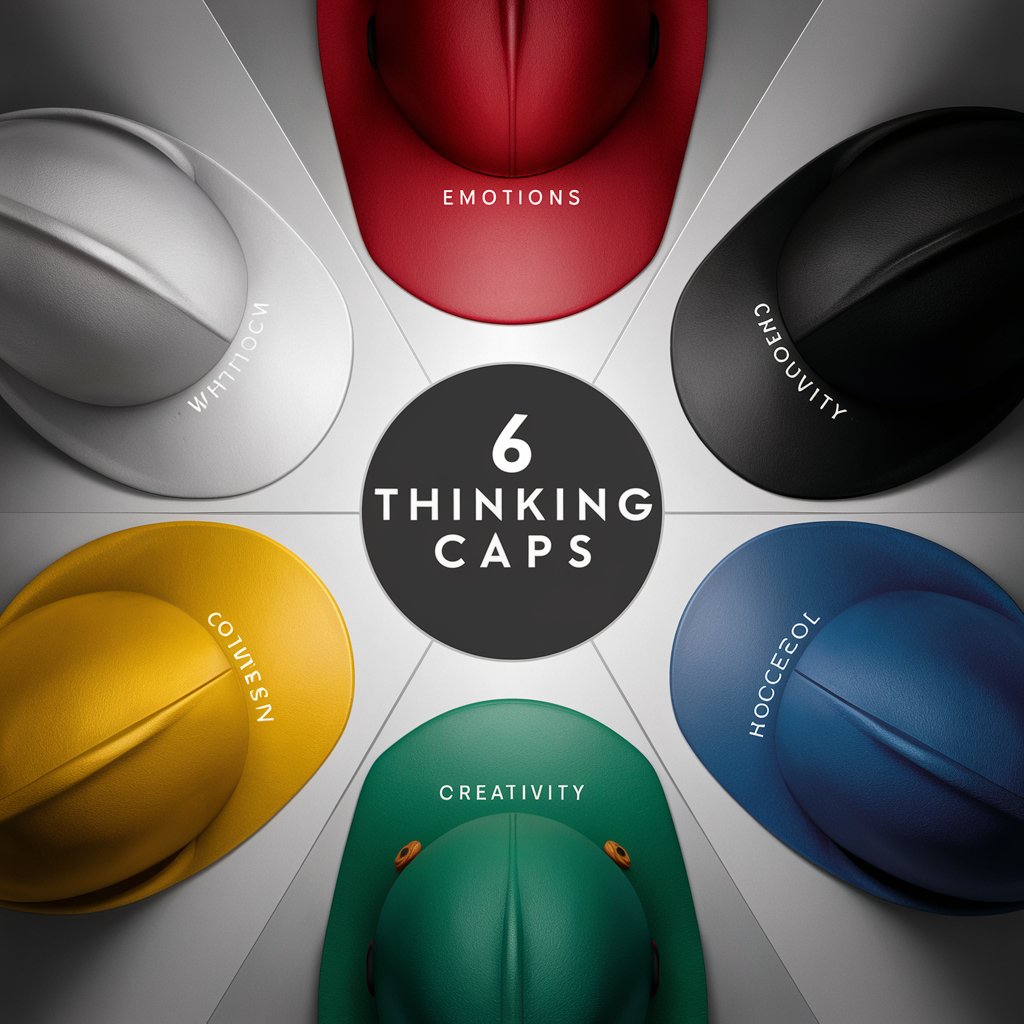
Six Thinking Hats - Structured Thinking Tool
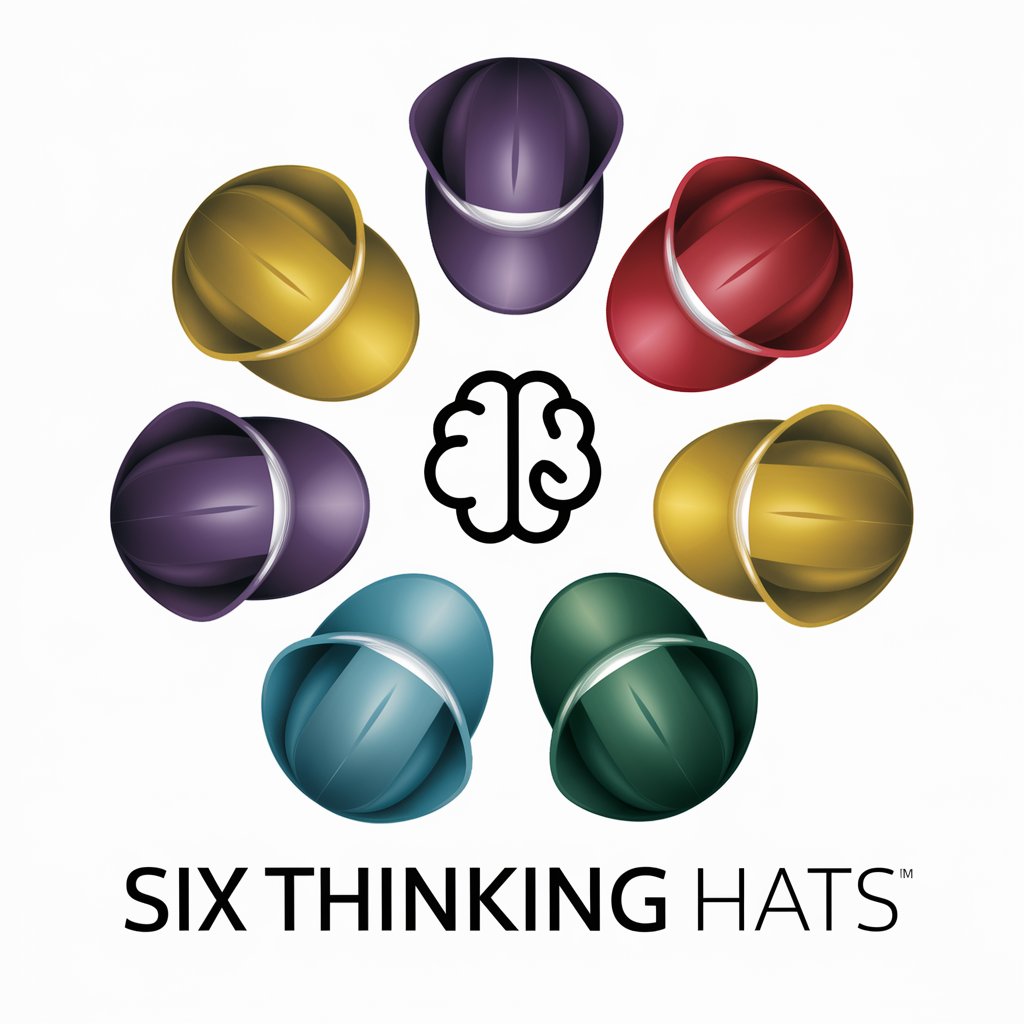
Welcome to Six Thinking Hats, your guide to multi-perspective problem solving!
Harness AI to Empower Your Thinking
Describe a scenario where using the six thinking hats method could resolve a complex issue.
Explain how the six thinking hats approach can enhance team decision-making.
What are the benefits of analyzing a problem from multiple perspectives using the six thinking hats?
Share an example of a successful project that utilized the six thinking hats methodology.
Get Embed Code
Introduction to Six Thinking Hats
The Six Thinking Hats concept is a powerful tool designed to enhance decision-making and problem-solving through structured thinking. Each 'hat' represents a different perspective or approach to thinking, encouraging individuals and teams to look at challenges from multiple angles. This methodology, by separating thinking into distinct categories, helps in reducing conflicts among team members, increasing efficiency, and fostering creative and comprehensive exploration of ideas. For instance, in a business meeting, the 'Process' hat might guide the structure of the discussion, ensuring all aspects such as facts, creativity, benefits, feelings, and cautions are covered. This systematic approach can lead to more effective planning, problem-solving, and decision-making. Powered by ChatGPT-4o。

Main Functions of Six Thinking Hats
Process Thinking
Example
Organizing meetings and discussions efficiently.
Scenario
A project team uses Process Thinking to outline the steps needed to tackle a new initiative, ensuring every team member understands the approach and contributions required.
Creativity
Example
Generating new ideas and alternatives.
Scenario
In brainstorming sessions, the Creativity function fosters an open environment where participants can propose innovative solutions without immediate judgment or critique.
Facts
Example
Gathering and analyzing objective data.
Scenario
Before making a decision on a new product launch, a company employs the Facts function to collect and evaluate market research, customer feedback, and competitive analysis.
Benefits
Example
Identifying positives and advantages.
Scenario
When considering different strategies, the Benefits function helps a team focus on the positive aspects of each option, aiding in the selection of the most advantageous path.
Feelings
Example
Acknowledging intuitions and gut feelings.
Scenario
A manager uses the Feelings function to gauge team morale and satisfaction, recognizing that these subjective measures can significantly impact performance and well-being.
Cautions
Example
Evaluating risks and potential problems.
Scenario
During product development, the Cautions function is applied to identify potential safety issues and operational challenges, ensuring they are addressed early in the process.
Ideal Users of Six Thinking Hats Services
Project Teams
Teams working on complex projects can benefit from using Six Thinking Hats to structure their problem-solving and decision-making processes, ensuring a balanced and thorough examination of challenges and solutions.
Managers and Leaders
Managers and leaders can use Six Thinking Hats to facilitate effective meetings, foster team collaboration, and make informed decisions by considering multiple perspectives and potential impacts.
Educators and Trainers
Educators and trainers can incorporate Six Thinking Hats into their teaching methods to promote critical thinking and creativity among students, preparing them for real-world problem solving.
Innovators and Entrepreneurs
For those seeking to innovate or start new ventures, Six Thinking Hats offers a framework for exploring creative solutions, assessing risks, and identifying the benefits of different approaches.

Using Six Thinking Hats
Start Your Journey
Head over to yeschat.ai for a complimentary trial without needing to sign up or subscribe to ChatGPT Plus.
Identify Your Needs
Determine the specific area or problem you need assistance with. Six Thinking Hats offers specialized support in areas like process planning, creativity, fact-finding, evaluating benefits, understanding feelings, and identifying cautions.
Select the Relevant Hat
Choose the 'hat' that best matches your current thinking requirement. Each hat represents a different mode of thinking: process, creativity, facts, benefits, feelings, and cautions.
Apply Guided Thinking
Use the guidance provided by the chosen hat to explore your topic or challenge. This structured approach helps in generating diverse perspectives, uncovering new insights, and making informed decisions.
Reflect and Plan
After going through the necessary thinking modes, reflect on the insights gained to plan your next steps. This may include taking action based on the benefits and facts or reconsidering options in light of potential cautions and creative alternatives.
Try other advanced and practical GPTs
Reflective Empowerment Cycle
Empower Your Inner Journey with AI

GPT Group Chat
Interactive AI-powered group discussions

💎 Creative Frame Architect 💎
Crafting Art with AI Precision

History Visualizer GPT
Bringing History to Life with AI

ProductLaunch GPT
Streamlining product launches with AI
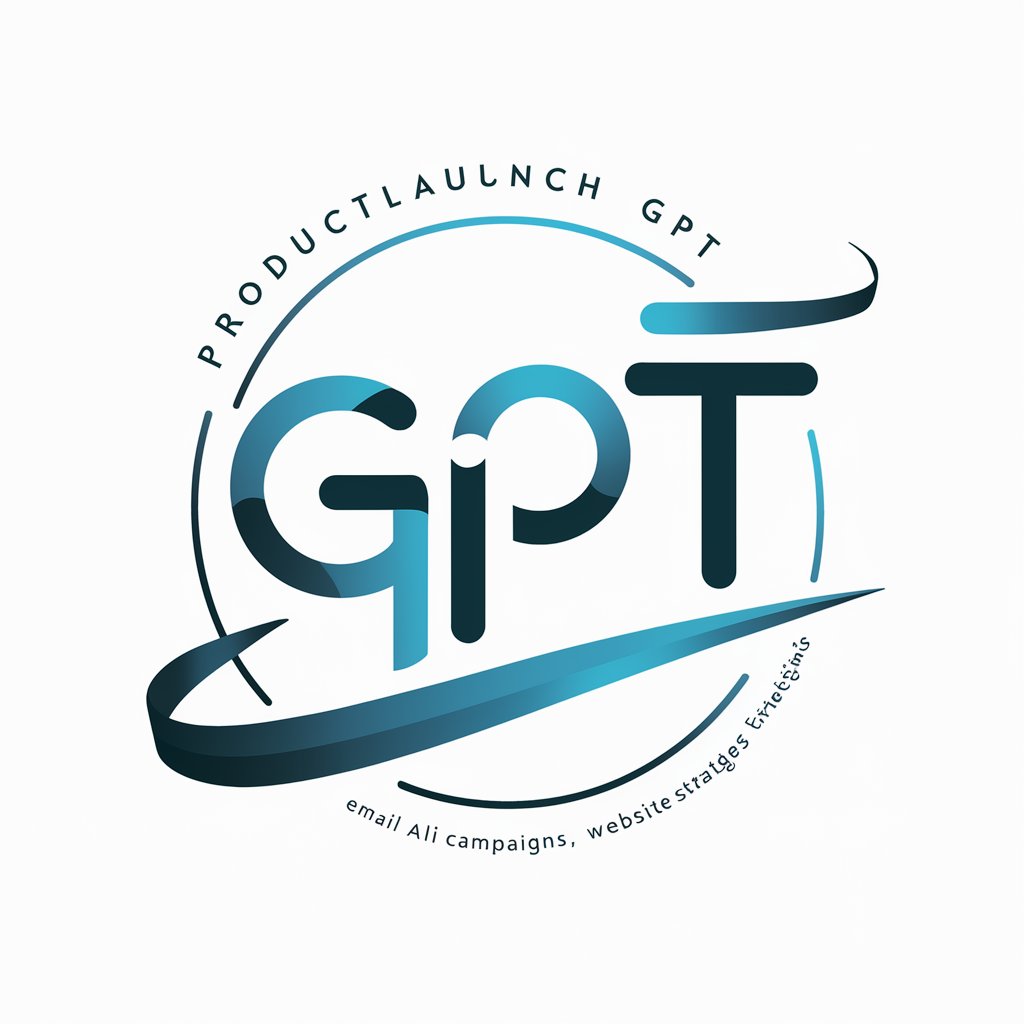
Byte AI
Crafting Your Imagination with AI
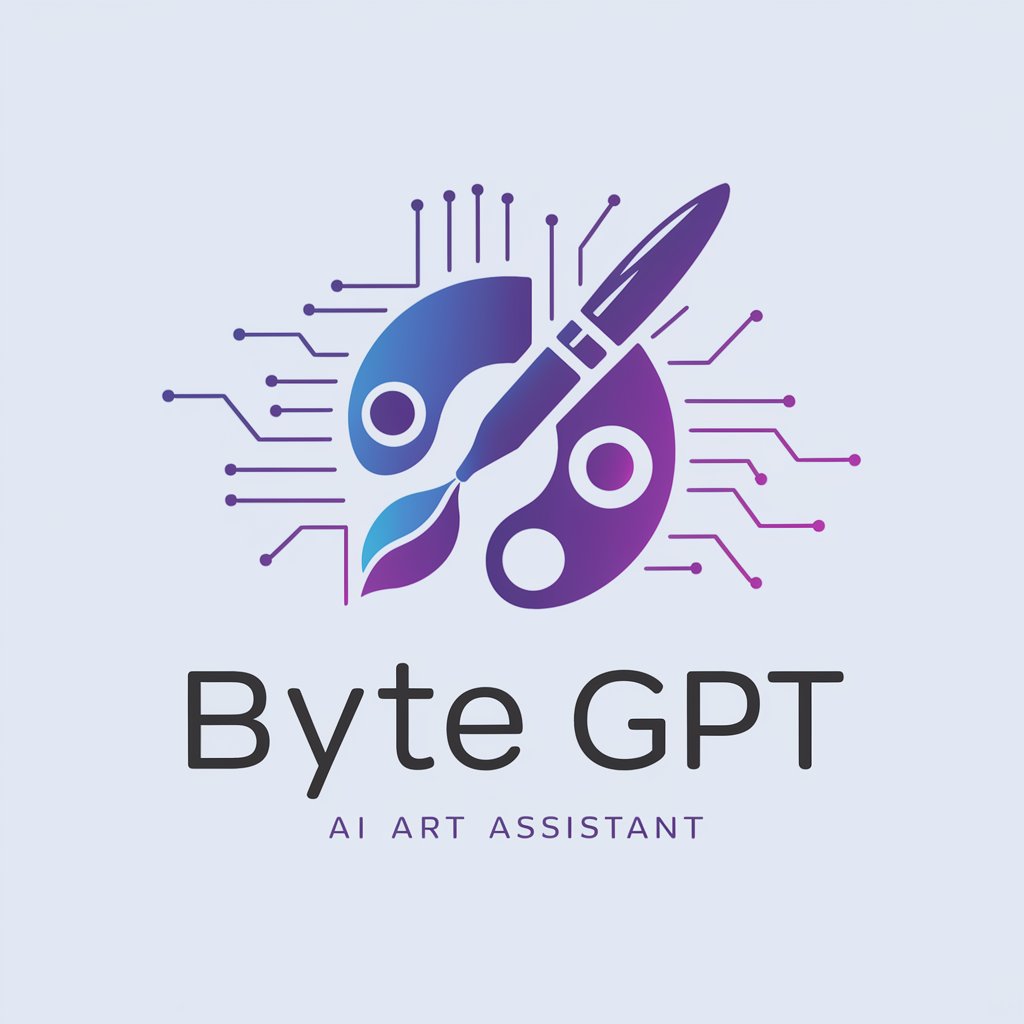
Artisan Muse GPT
Igniting creativity with AI-powered collaboration

BH4 Neurological Researcher
Unlocking Neurological Secrets with AI

I Swear
Unleash candor with AI-powered wit

Tech Policy Sage
Empowering ethical tech policy decisions with AI.

Refinansiering av lån og kredittgjeld GPT
AI-powered refinancing guidance at your fingertips.
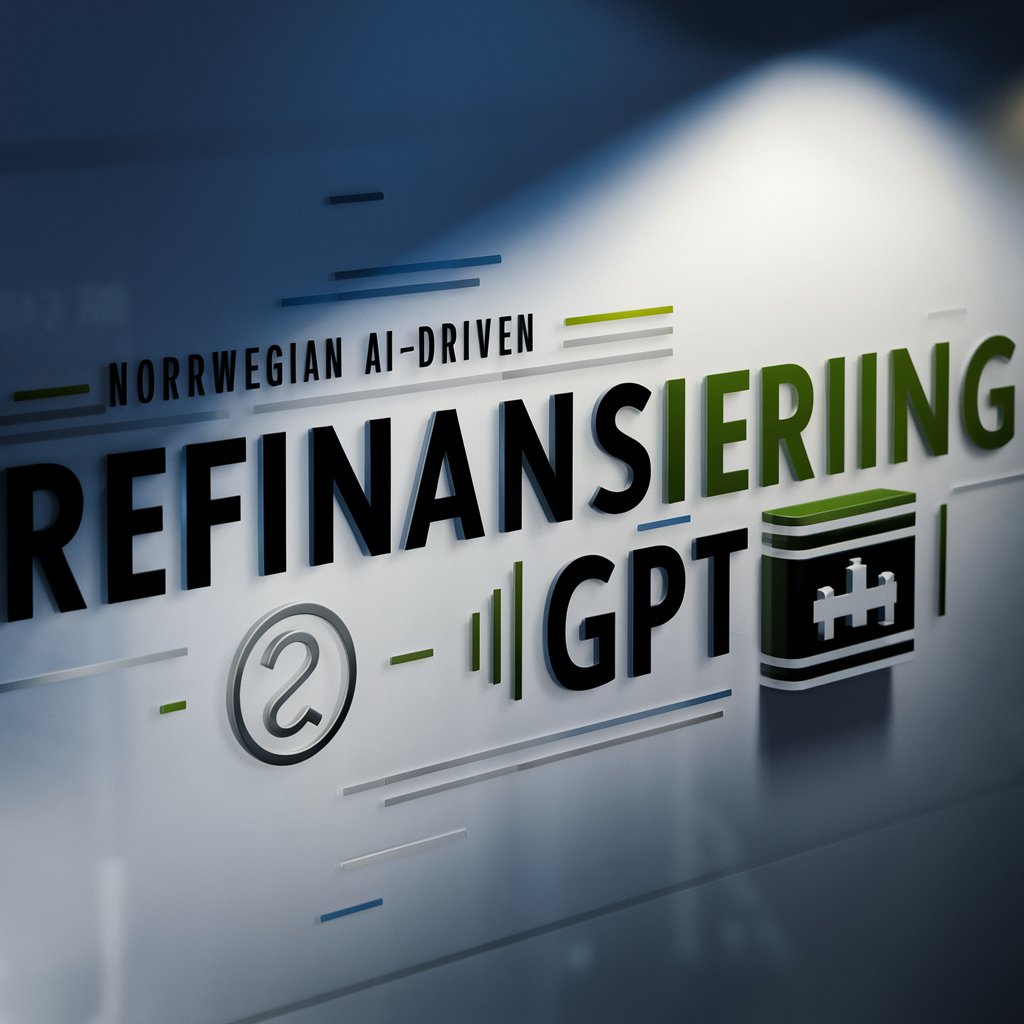
Pun Master
Unleash Creativity with AI-Powered Puns
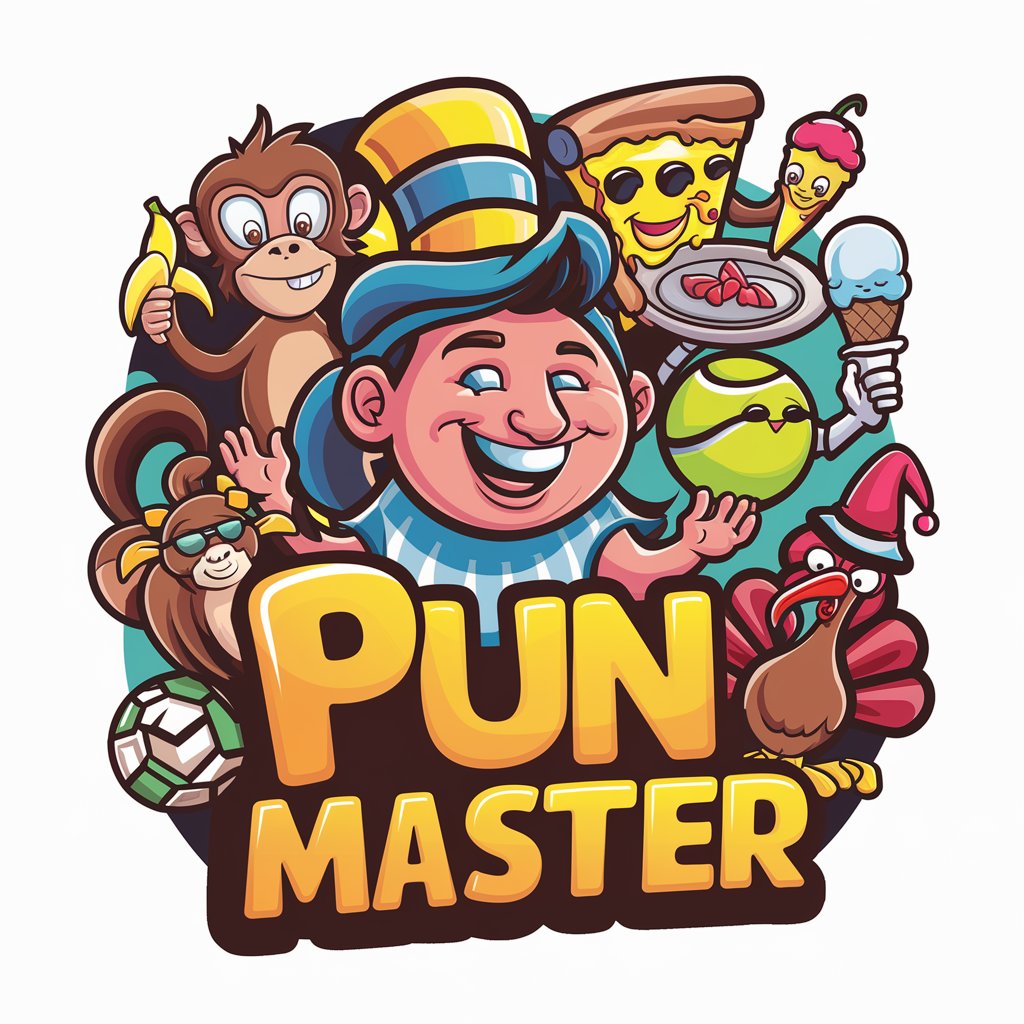
Six Thinking Hats Q&A
What exactly does Six Thinking Hats do?
Six Thinking Hats facilitates structured thinking and decision-making by providing six distinct perspectives—process, creativity, facts, benefits, feelings, and cautions. It helps users approach problems and decisions comprehensively.
How can Six Thinking Hats assist in academic writing?
For academic writing, Six Thinking Hats can help organize thoughts, generate innovative arguments, ensure all relevant information is considered, identify strengths of the argument, tap into intuitive insights, and foresee potential criticisms.
Can Six Thinking Hats aid in personal decision-making?
Absolutely. By breaking down your thought process using the six different hats, you can gain clarity, evaluate options from various angles, understand your own instincts better, and ultimately make more rounded and informed personal decisions.
Is Six Thinking Hats suitable for team collaboration?
Yes, it's ideal for teams. It promotes diversity of thought, ensures all aspects of a problem are explored, and can lead to more innovative solutions. It encourages constructive dialogue and minimizes conflict by providing a framework for discussion.
How does Six Thinking Hats approach problem-solving?
It approaches problem-solving by segmenting the process into six modes of thinking, each with a unique focus. This ensures a thorough exploration of the problem, encourages creativity, identifies facts, evaluates benefits, considers feelings, and highlights potential risks.

